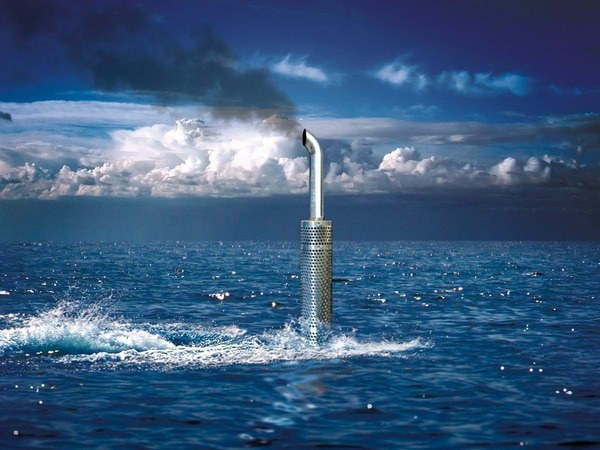The appearance of water on the exhaust pipe of a modern car equipped with a catalyst system to neutralize the harmful emissions) indicates normal operation of such systems as ignition, fuel supply, exhaust gas purification, control of working cycles of the engine. Therefore, the water in the muffler indicates the correct functioning of the basic knots.
The main "culprit" of the phenomenon of condensation. It is formed due to the fact that the inside of the exhaust pipe is cooled, not so fast as external. The process of condensation starts immediately after stopping the engine, inside the exhaust muffler immediately appear dewdrops that later freeze. Once the engine is allowed again, the ice begins to melt and the pipe starts to drip moisture.
In modern vehicles equipped with catalyst, water may drip during the process of operation of cars. This is due primarily to the principle of operation of the purifier of harmful emissions. In the exhaust manifold from the cylinders is fed into a "bouquet" of various chemical elements and their compounds among which carbon dioxide, oxygen, carbon monoxide, oxides of nitrogen, unburned hydrocarbons, water. Of the listed components are harmless oxygen, carbon dioxide, water. All other connections are the catalyst and are oxidized due to the presence in the construction of the cleaner of platinum and palladium. They are located on the longitudinal honeycomb catalyst through which the exhaust gases. The result is carbon dioxide, water vapor. Last condenseries on the inner surface of the muffler and is manifested in the form of water droplets.
Often the water appears on the stage warming up the engine. This involves the use of enriched mixture, which is designed to accelerate the warm-up time of the catalyst, since it is the most efficient in the region of +300oC. The result is a rich mixture rich in carbon monoxide, unburned hydrocarbons, rapidly turns into steam and water.
Constant and frequent accumulation of water in the muffler will inevitably lead to corrosion this element of the exhaust system. To avoid such troubles, it is recommended to perform a lengthy, active trips that will contribute to a better heating of the muffler and prevent the formation of moisture. Another way is a full engine warm up; riding a cold motor only contributes to the formation of condensate.
Causes of water in the muffler
The main "culprit" of the phenomenon of condensation. It is formed due to the fact that the inside of the exhaust pipe is cooled, not so fast as external. The process of condensation starts immediately after stopping the engine, inside the exhaust muffler immediately appear dewdrops that later freeze. Once the engine is allowed again, the ice begins to melt and the pipe starts to drip moisture.
In modern vehicles equipped with catalyst, water may drip during the process of operation of cars. This is due primarily to the principle of operation of the purifier of harmful emissions. In the exhaust manifold from the cylinders is fed into a "bouquet" of various chemical elements and their compounds among which carbon dioxide, oxygen, carbon monoxide, oxides of nitrogen, unburned hydrocarbons, water. Of the listed components are harmless oxygen, carbon dioxide, water. All other connections are the catalyst and are oxidized due to the presence in the construction of the cleaner of platinum and palladium. They are located on the longitudinal honeycomb catalyst through which the exhaust gases. The result is carbon dioxide, water vapor. Last condenseries on the inner surface of the muffler and is manifested in the form of water droplets.
The periods of most intensive formation of moisture
Often the water appears on the stage warming up the engine. This involves the use of enriched mixture, which is designed to accelerate the warm-up time of the catalyst, since it is the most efficient in the region of +300oC. The result is a rich mixture rich in carbon monoxide, unburned hydrocarbons, rapidly turns into steam and water.
Constant and frequent accumulation of water in the muffler will inevitably lead to corrosion this element of the exhaust system. To avoid such troubles, it is recommended to perform a lengthy, active trips that will contribute to a better heating of the muffler and prevent the formation of moisture. Another way is a full engine warm up; riding a cold motor only contributes to the formation of condensate.
